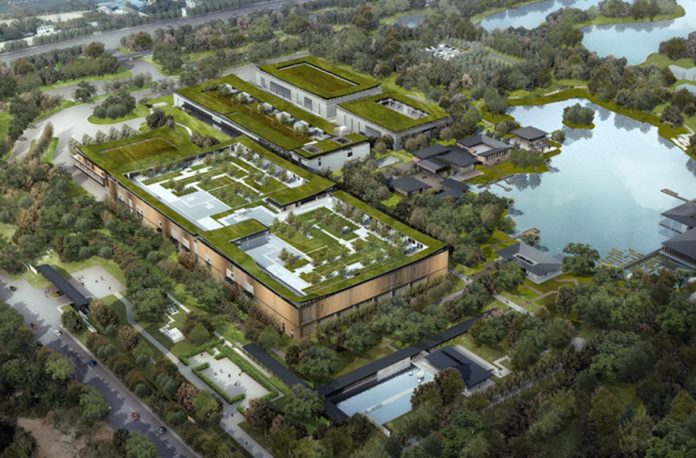
Robotics and AI have the power to reinvent the manufacturing sector, though perhaps not the way you might think. Rather than replacing human workers with AI-powered automation, factories are likely to leverage those technologies to strike the right balance between man and machine in ways that can transform the manufacturing sector.
That was the takeaway from a keynote session at last week’s RISE Conference in Hong Kong that examined how robots and AI will transform the factory floor.
The first order of business for Marjorie Yang, chair of textile manufacturer Esquel Group, was to dismiss the idea that factory automation will replace workers. “Why would I want to replace all the humans?” she shrugged.
Yang pointed out that factory automation is nothing new, and that companies like Toyota have already pioneered the concept of ‘autonomation’, which seeks to strike a balance between machines and human workers. Then as now, the objective of automation isn’t to replace humans, but to improve the quality of the business, the jobs of its employees, and even the work environment.
“If we can improve the quality, then that will reduce the wastage in the entire value chain, and that will help the climate and environment’ Yang said. “At the same time, it will allow the worker to have higher income because as we reduce waste, the company can make more money, and the worker can make more money, and the customer can have more agility.”
The challenge, she explained, is to educate humans that they won’t be marginalized by AI and automation, but will instead be beneficiaries.
“The most difficult part of automation is understanding where humans are better than machines, and how each can help the other to create value,” she said.
Manufacturing paradigm shift
Norman Tien, pro-vice-chancellor and interim vice president at The University of Hong Kong, agreed with Yang, and added that the impact of robotics and AI could be more profound than people realize. While AI and machine learning have enabled factory floor robots to become more intelligent and mobile – compared to old-school robots that are stationary, have to be positioned by humans in one place and can only do dumb, repetitive tasks – the combination of robotics and AI also has the potential to change the manufacturing paradigm in disruptive ways.
“You really can’t look at it in terms of replacing a process or replacing a person or things of this nature,” Tien said. “What Esquel is interested in is how manufacturing itself is transformed.”
For example, he said, robotics and AI provide an opportunity to change how we look at wealth creation in manufacturing.
“Robots and AI will help companies generate wealth, but it won’t be in the traditional sense of always going in to labor,” Tien said. “But humans are still going to be a part of our society, they will still be working. So companies will take on additional responsibility to help with social responsibility, environmental responsibility, creativity and innovation.
Textile automation challenges
It’s worth pointing out at this stage that one reason Esquel puts such value on the human side of the autonomation equation is because textile/garment factory floors aren’t easy to automate. The reason: handling fabric requires the limberness of the human hand.
“Fabric is soft, and in handling fabric, the worst nightmare is to introduce tension into the fabric, because then you’ve just changed the shrinkage of the fabric,” Yang explained.
Tien agreed, noting that even though robotic hands are capable of picking up an egg without breaking it, handling fabric presents a different challenge in robotics design.
“Building an automobile is easier, because all the pieces are rigid – you can position things exactly in the right place. You can’t do that with textiles,” he said.
“If one can do automation within the garment industry, that is in fact going to be breakthrough technology for robotics and AI.”
The Guilin Integral way
According to Yang, Esquel wants to transform the manufacturing paradigm beyond smart robots, Industry 4.0 and other high-tech buzzwords – the company also aims to change the factory work environment to something more human-friendly.
To that end, Esquel recently opened a factory in Guilin Integral, a self-described “industrial tourist park” at Jiumeiqiao in Guilin that is designed to not only be sustainable, but also to leverage Guilin’s spectacular scenery to provide a more pleasant and ecological work environment. Yang says this is the future of manufacturing, or at least it should be.
“The design elements are deliberately put there to talk to people. We want to change behavior. We want to change people’s mind about why workers have to suffer [in a factory environment],” Yang said.
In other words, where most people associate factories with boredom, repetition, low pay and drab work environments, the Esquel factory in Guilin Integral aims to turn that impression on its ear.
“Why can’t a worker in a garment factory enjoy a meal facing a lake? Why can’t they work at an environment that is beautiful?” Yang insisted. “We are building at Integral to bring people to change their mind about the set ways of thinking about the traditional industry and these people who are at the bottom of the pyramid.”















